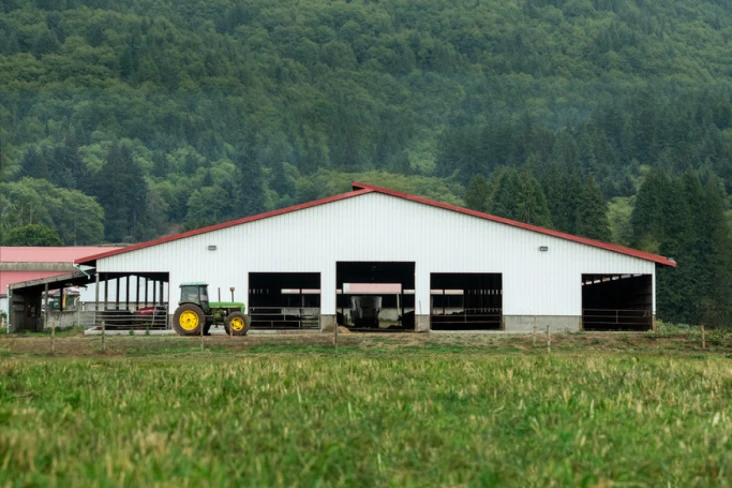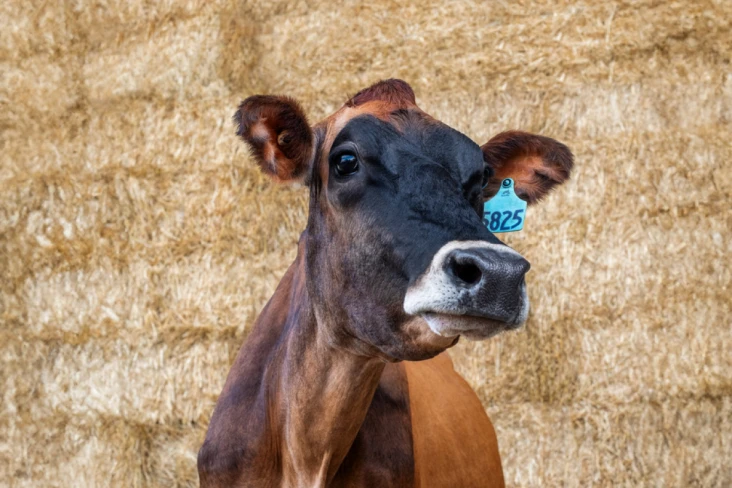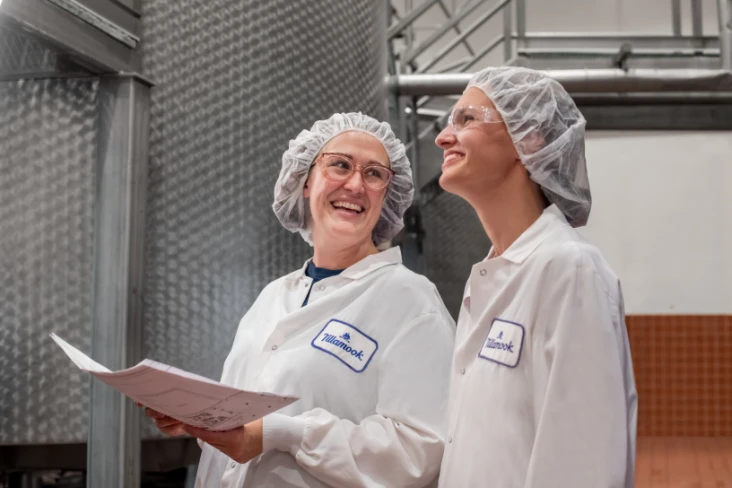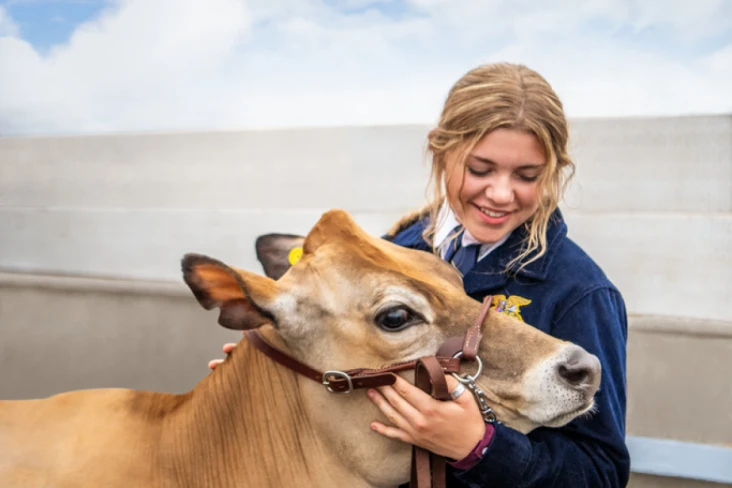2022 GLOBAL REPORTING INITIATIVE ISSUE BRIEF
At Tillamook County Creamery Association (TCCA), we hold ourselves accountable to protect the resources and ecosystems that sustain us. It’s not just our responsibility — it’s our heritage. TCCA is part of the food-processing industry, which relies on agricultural products. In milk production, water is necessary for growing feed crops for cows, for direct cow consumption and for maintaining clean facilities. Water is also required in the manufacture of our dairy products and sanitation of facilities. Due to the need for large amounts of water in food and agriculture production, it is imperative that water is used in the most sustainable and responsible way possible. We track and maintain water quality in the regions where we operate, and we manage the water consumed in producing our products.
One of our Stewardship Charter commitments is Enduring Ecosystems. As part of this commitment, we strive to reduce water consumption and improve water quality at our facilities and on the properties of our farmer-owners.
Key Players: Our team of experts ensures that we are compliant with internal policies, government regulations and industry best practices that pertain to water stewardship. TCCA’s Engineering team focuses on compliance with wastewater and stormwater discharge requirements, while also optimizing our water use within our manufacturing facilities. For example, we monitor water consumption at our Tillamook and Boardman, Oregon, manufacturing facilities to identify conservation opportunities in manufacturing processes.
Our Stewardship team works with local and regional stakeholders, including resource agencies and non-governmental organizations, to uphold our commitment to water stewardship. This team also works collaboratively with our farmer-owners to assist farmers in implementing best management practices (BMPs) to protect adjacent waterways. They provide the scientific, technical, and social assistance necessary to initiate these practices. Additionally, all farmer-owners are required by state regulators to assess nutrient loading and describe manure management strategies that protect water quality through Oregon’s Confined Animal Feeding Operation (CAFO) regulatory framework.
According to the World Resources Institute Aqueduct Water Risk Atlas, both our Tillamook and Boardman, Oregon, manufacturing facilities are in areas of low water risk.
In Tillamook County, water is not a constrained resource. Average precipitation is 94 inches per year. There are seven major rivers (Kilchis, Miami, Nehalem, Nestucca, Tillamook, Trask and Wilson) that flow into three bays (Nehalem, Nestucca and Tillamook). Our Tillamook manufacturing facility purchases water from the Kilchis Regional Water District (KRWD) Bay City Water System, which sources water from two wells located along the banks of the Kilchis River. All water returned to the water table must meet both quality and temperature requirements. The on-site wastewater treatment facility at our Tillamook facility includes several biological treatment & active cooling processes that, cumulatively, meet or exceed Oregon Department of Environmental Quality standards for protecting water quality and aquatic habitats. Effluent is tested to ensure permit conditions are being met and in 2022 we received no notices of violation for environmental non-compliance. As our business has grown, we have made significant investments in our wastewater treatment plant to properly manage and treat our effluent.
Our Boardman manufacturing facility is in a more arid region; the average annual precipitation is about 9 inches per year. We purchase process water from the Port of Morrow, which sources its water from several deep wells that are owned by the port. We source domestic water for sinks, toilets and drinking from the City of Boardman, which draws water from a shallow aquifer near the Columbia River. Wastewater at the Boardman manufacturing facility is mechanically screened and pH balanced in an on-site pre-treatment facility, treated by the Port of Morrow and ultimately applied to nearby agricultural lands and utilized for crop irrigation.
We track our total water consumption in gallons at each of our manufacturing facilities, our offices and farm stores before inputting the totals into our annual Environmental Footprint. We also track our wastewater discharge in gallons and continue to monitor water availability and quality.
Each year, we publicly report water use in our Stewardship Report, with a target of minus 1% year-over-year change in total gallons of water consumed, normalized by milk pounds received. We also publicly report water extractions to Global Reporting Initiative (GRI) and to the Innovation Center for U.S. Dairy’s Sustainability Alliance.
KPI: 0.05% decrease in total gallons of water consumed, normalized by milk pounds received (2022 vs. 2021).
Our largest use of water is at our manufacturing facilities in Boardman and Tillamook. Although fluid milk is our primary ingredient, water is required for manufacturing of our dairy products and sanitizing our facilities. One industry standard metric we have been tracking for years is a goal of using one gallon of water for every one gallon of milk processed. Various sources establish a water-to-milk ratio of 1:1. The Tetra Pak Dairy Processing Handbook, a widely utilized industry reference, states: “A typical water to milk ratio is 2:1, but with intense saving of water, it is possible to come down to a ratio of less than 1:1.” To help us identify a more definite path to achieve this goal, Tillamook has collaborated with Ecolab — a global leader in water, hygiene, and infection prevention solutions — for a total plant assessment of water consumption at our Tillamook manufacturing facility.
Capturing Water from Cheese Production: Liquid whey is a by-product of the cheese-making process. At our Tillamook and Boardman manufacturing facilities, we process and preserve this whey. The liquid whey is dried into a powder form for use in various products and supplements. During the drying process in our Boardman manufacturing facility, we are also able to capture the excess moisture, convert this into polished (filtered) water and reuse this water in our processes. Capturing and reusing this water source allows us to reduce our daily water consumption by approximately 300,000 gallons.
Watershed Baseline Analysis: In 2017, we started a multi-year alliance with The Freshwater Trust (TFT) to conduct a comprehensive evaluation in the Tillamook River and Nestucca River watersheds. We identified health indicators for the watershed, including salmon habitat, sediment, nutrient and bacteria quantity, stream temperatures and wetland health. TFT also provided a site-specific assessment and prioritization for the potential ecological uplift of BMPs such as agricultural buffers, biodigesters, cover cropping, exclusion fencing for livestock, riparian vegetation restoration and manure tank covers.
USDA Regional Conservation Partnership Program: In the fall of 2020, we used the baseline analysis conducted by TFT and collaborated with Trout Unlimited and their Salmon SuperHwy Initiative, the National Oceanic and Atmospheric Administration and others to apply for a USDA Regional Conservation Partnership Program grant. The $1.2 million grant was awarded and TCCA is serving as a leading partner, providing $500,000 in both financial and in-kind donations for the duration of the five-year project. Our goal is to improve water flow and aquatic habitat for salmon and other species that depend on Tillamook County watersheds through projects like restoring riparian habitat and replacing undersized culverts and other stream crossings.
Water Stewardship Grants for Farmers: Every year, we allocate up to $25,000 towards environmental grants for our farmer-owners. These grants have supported fencing projects that prevent cows from entering streams, thereby preventing erosion and protecting aquatic habitat. The grants have also been used in riparian restoration projects, including removing non-native and native vegetation, fixing culverts and research on BMPs and new technologies.
Technical Assistance for Cooperative members: Our Farm Services team works with our farmer-owners to assist them in completing their required nutrient management plans and manure management strategies to protect water quality. The requirements of Oregon’s CAFO regulatory framework are rigorous and include annual inspections by the Oregon Department of Agriculture. Additionally, as part of our Farm Assurance Program, our third-party evaluations verify environmental stewardship and records of compliance with the CAFO program. This includes reviewing environmental practices and performance. Over 95% of TCCA farmer-owners voluntarily plant cover crops, which are proven to significantly reduce soil erosion and contamination of waterways.
We nurture several alliances in the community to advance our commitment to water stewardship.
Tillamook Estuaries Partnership (TEP): The Tillamook Estuary is one of 28 estuaries that are part of the National Estuaries Program, signifying its ecological importance. TCCA has repeatedly collaborated with TEP in its mission to restore and protect the estuary and its watershed. We helped support, contribute and review the Comprehensive Conservation Management Plan, a 10-year action plan to coordinate resources; strengthen commitments; and help protect and enhance the natural resources of the bays and watersheds in Tillamook County. TEP has provided restoration expertise for some of our environmental grants with our farmer-owners to protect water quality, such as streamside fencing initiatives.
Tillamook Soil and Water Conservation District: We work with the Tillamook Soil and Water Conservation District to manage the fencing of stream banks adjacent to farmer-owner properties. Fencing streams protects riparian vegetation; it also prevents cows from eroding streambanks and impacting water quality.

U.N. SUSTAINABLE DEVELOPMENT GOALS

Goal 6
Ensure Access to Water and Sanitation for All
TCCA works to improve water quality through wastewater treatment, looks for ways to increase water use efficiency at our plants and protects and restores water-related ecosystems including riparian habitat.
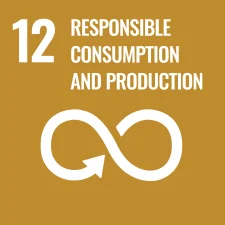
Goal 12
Ensure Sustainable Consumption and Production Patterns
Our manufacturing processes require the use of water for sanitation and operational functions. The Engineering Team works to optimize use of water to reduce consumption.
Our 2022 Stewardship Report has been prepared in accordance with the GRI Standards: Core option.
Commitments to stewardship
